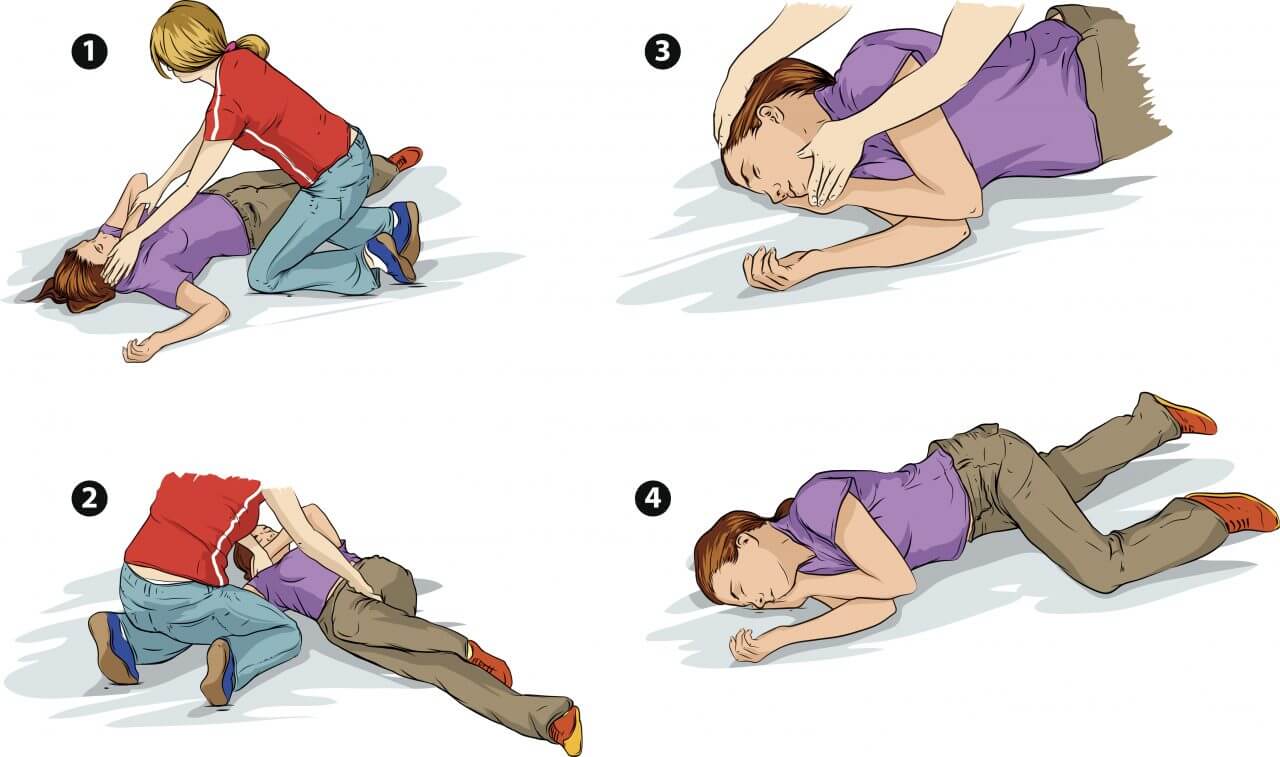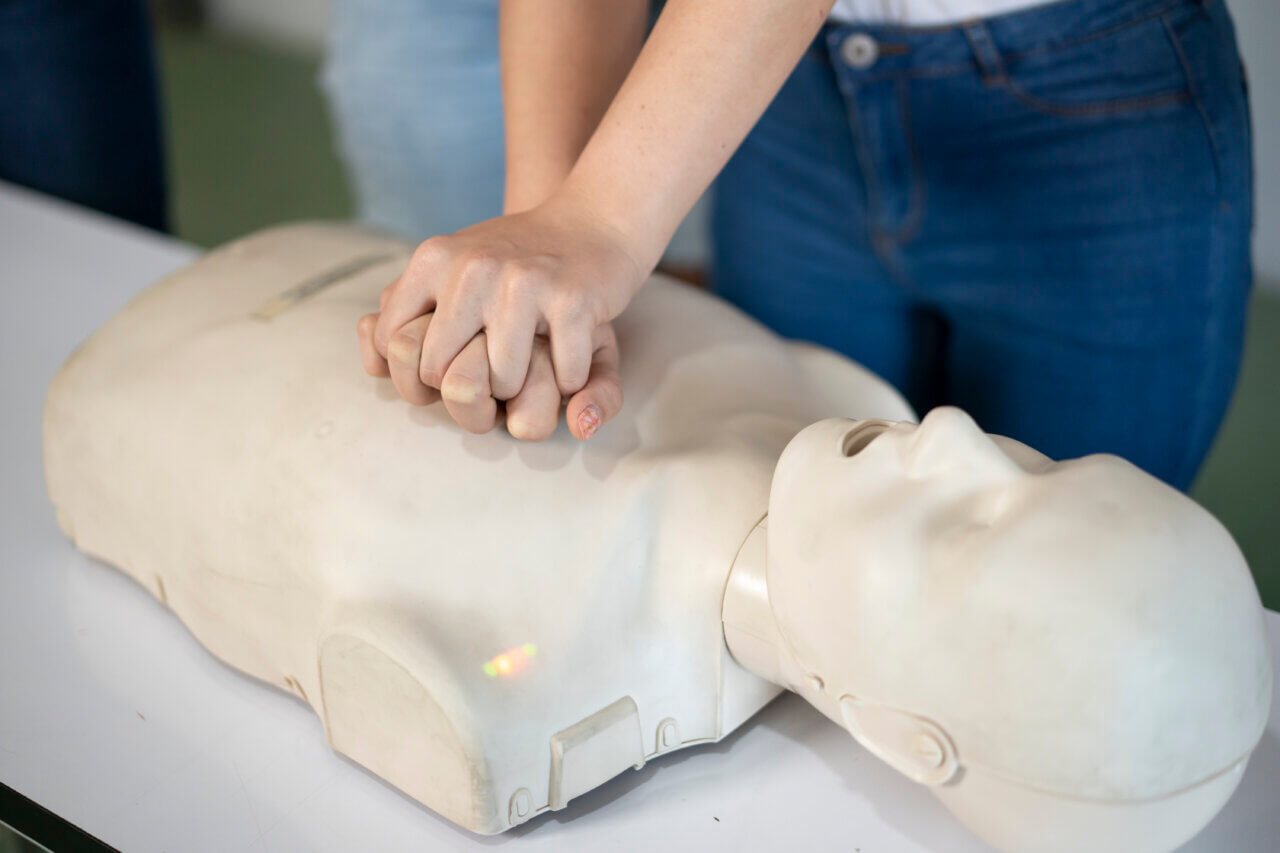Knowing the Recovery Position and CPR Could Help You Save a Life

A scary scene erupted Saturday on the field of Denmark’s game against Finland at Euro 2020, a European men’s football championship. Denmark midfielder, Christian Eriksen, collapsed near the sideline in what was later determined to be sudden cardiac arrest.
Eriksen’s teammates acted immediately by rolling him into the recovery position while unconscious to assess his breathing and clear his airway. Team captain, Simon Kjaer, then performed CPR until medics arrived.
Medical staff administered on-field care for about 20 minutes, resuscitating Eriksen with CPR and a defibrillator.
Thanks in large part to the swift action of his teammates, Eriksen was reported to be in stable condition at a hospital in Copenhagen the morning after the incident.
If a person collapses, time is of the essence as it may take emergency medical personnel several minutes to arrive on scene. Knowing how and when to use the recovery position and administer CPR in those crucial first minutes could be the difference between life and death.
Never miss the news that matters most.
Subscribe to our free email newsletter to ensure you stay up-to-date on the health tips and news that matter most to you and your family.
What is the Recovery Position?
The recovery position is a body positioning technique used to promote an open airway and ease of breathing in an unconscious person.
Take the following steps to move someone into the recovery position if they are unconscious, but breathing normally:
- Begin by positioning the person on their back and kneel at their side.
- Move the person’s arm that is nearest you to a right angle with the hand pointing upward toward their head (think of a goal post).
- Next, tuck the opposite hand under their head so that their cheek is touching the back of their hand.
- Bend the leg furthest from you at the knee to place in a right angle.
- Carefully pull on the bent knee to roll the person onto their side (top arm will be supporting their head and bottom arm will prevent rolling too far).
- Gently tilt the person’s head back by lifting their chin to open the airway and check to see that nothing is blocking their ability to breathe.
- Stay with the person until professional help arrives.
If you suspect a head, neck or spinal injury, do not attempt to move them until emergency medical personnel arrives. Instead, leave the person face-up. If you are unable to determine if the person is breathing, roll the person on their back, keeping the head aligned with the body.
CPR Basics
It may become necessary to perform CPR. Performing CPR immediately is critical in the treatment of cardiac arrest. This reestablishes blood flow to the body and often serves as the lifeline between the time of incident and more-advanced emergency care.
Call 911 immediately to get emergency responders en route. If there are other bystanders present, direct one of them to call 911 and look for an automated external defibrillator (AED).
Begin pushing hard and fast on the chest, allowing the chest to fully rise between each compression. The American Heart Association (AHA) recommends that compressions be delivered at a rate of 100-120 compressions per minute and at a depth of at least two inches. You can learn hands-only CPR from home by watching this video from the AHA.
Continue compressions until an AED is found or first responders arrive.
Defibrillation
Defibrillators deliver an electrical shock through the chest to the heart. The shock oftentimes prompts the heart to resume its normal rhythm. Defibrillators commonly have voice prompts that walk you through the steps, and they are programmed to measure heart rhythm and deliver a shock only when necessary.
Learn More and Find Care at Baptist Health
Baptist Health’s highly skilled cardiologists offer a progressive approach to heart care with personalized, patient-oriented diagnosis and treatment protocols. Learn your heart health risk with our free online assessment, or find a heart care provider near you.
Next Steps and Useful Resources:
Learn More About the Conditions We Treat
Hands-Only CPR and When to Use It
Rehabilitation After a Cardiac Event
Differences Between Pacemaker & Defibrillator



